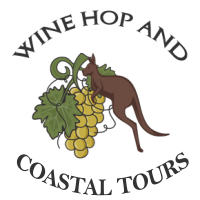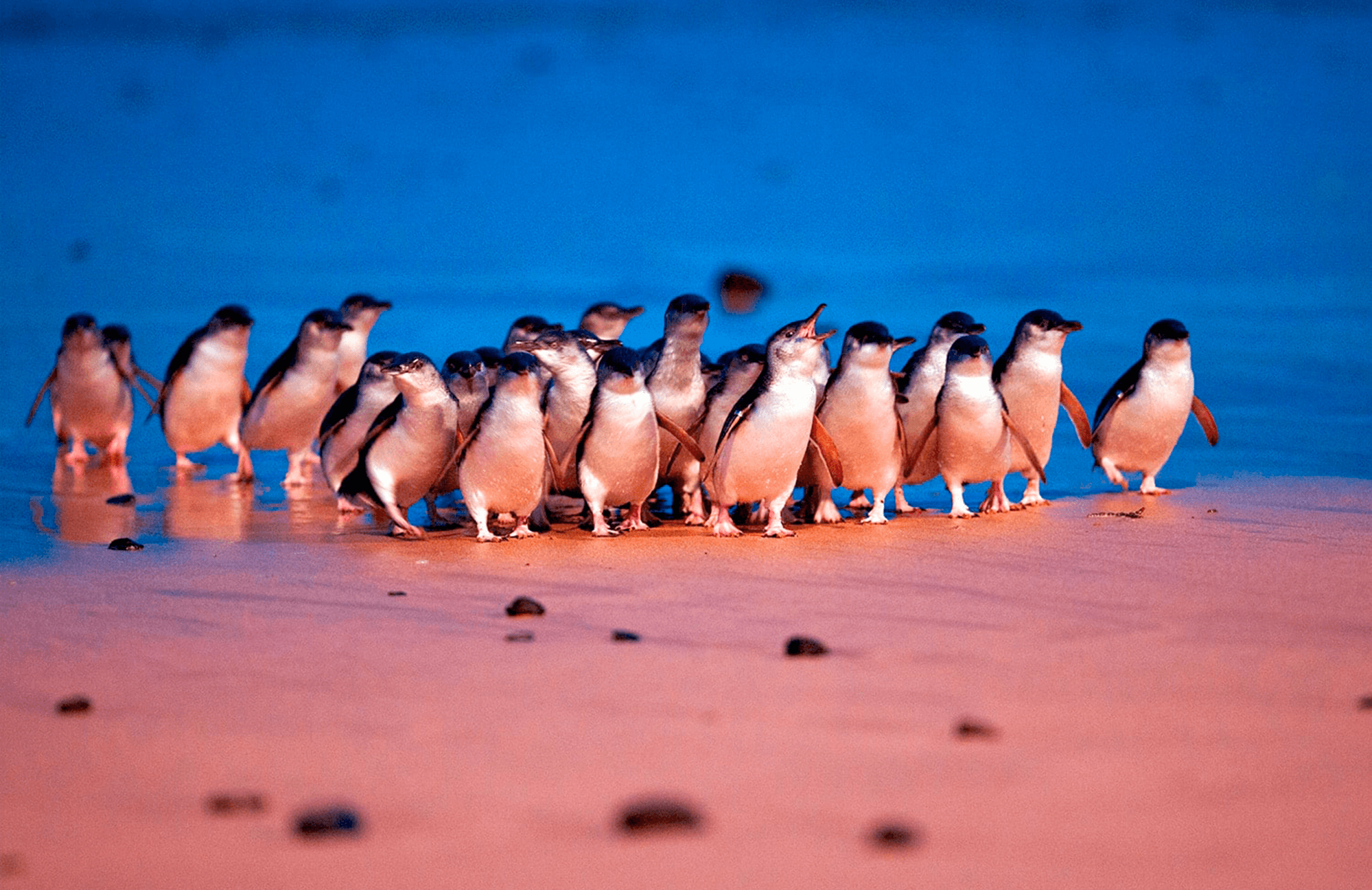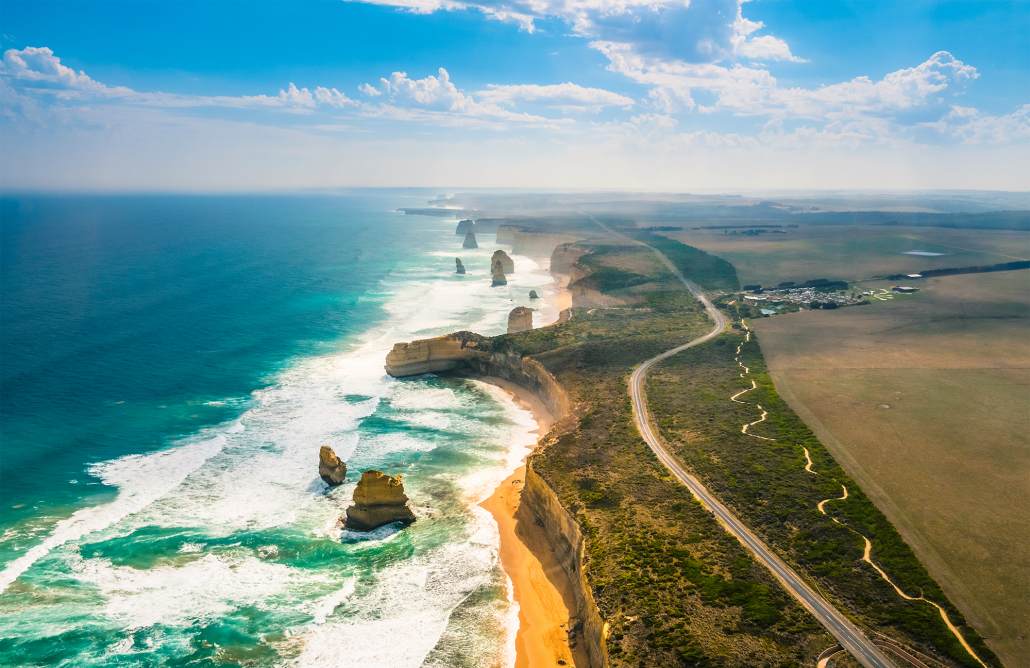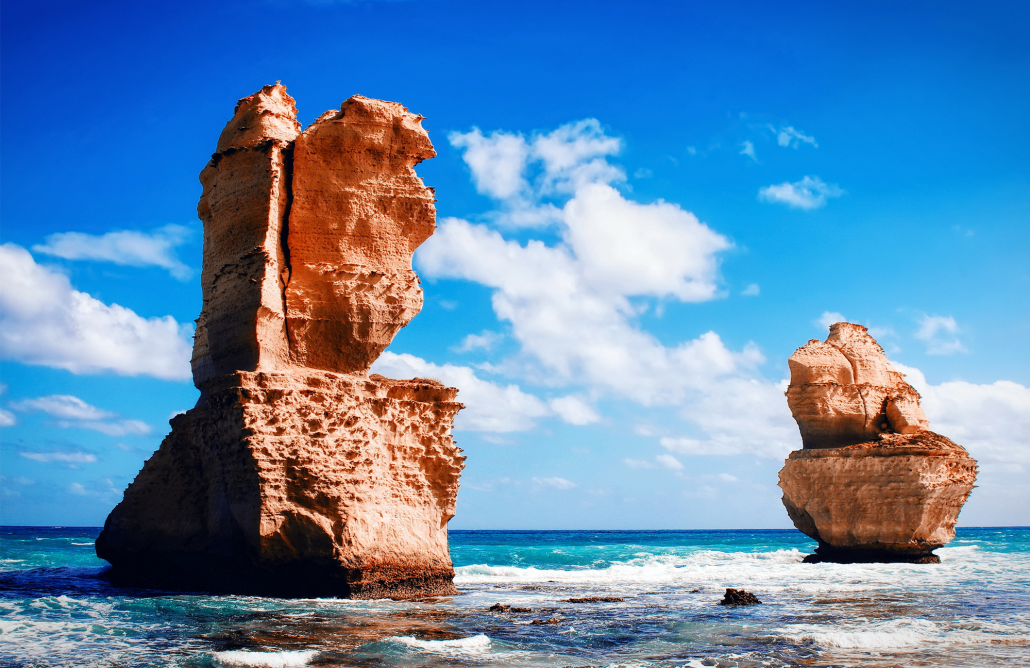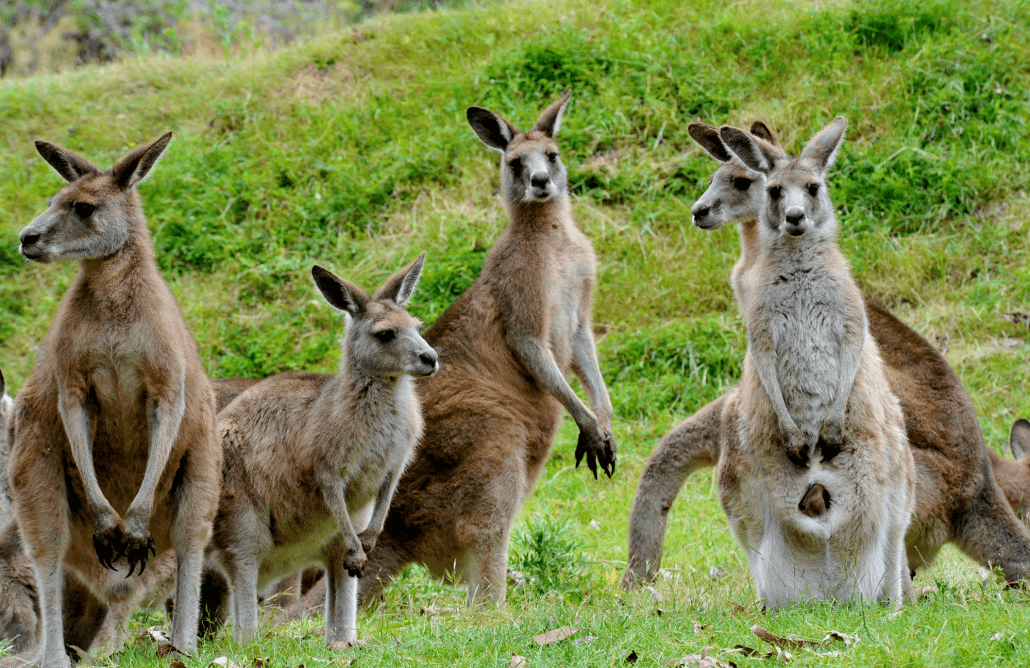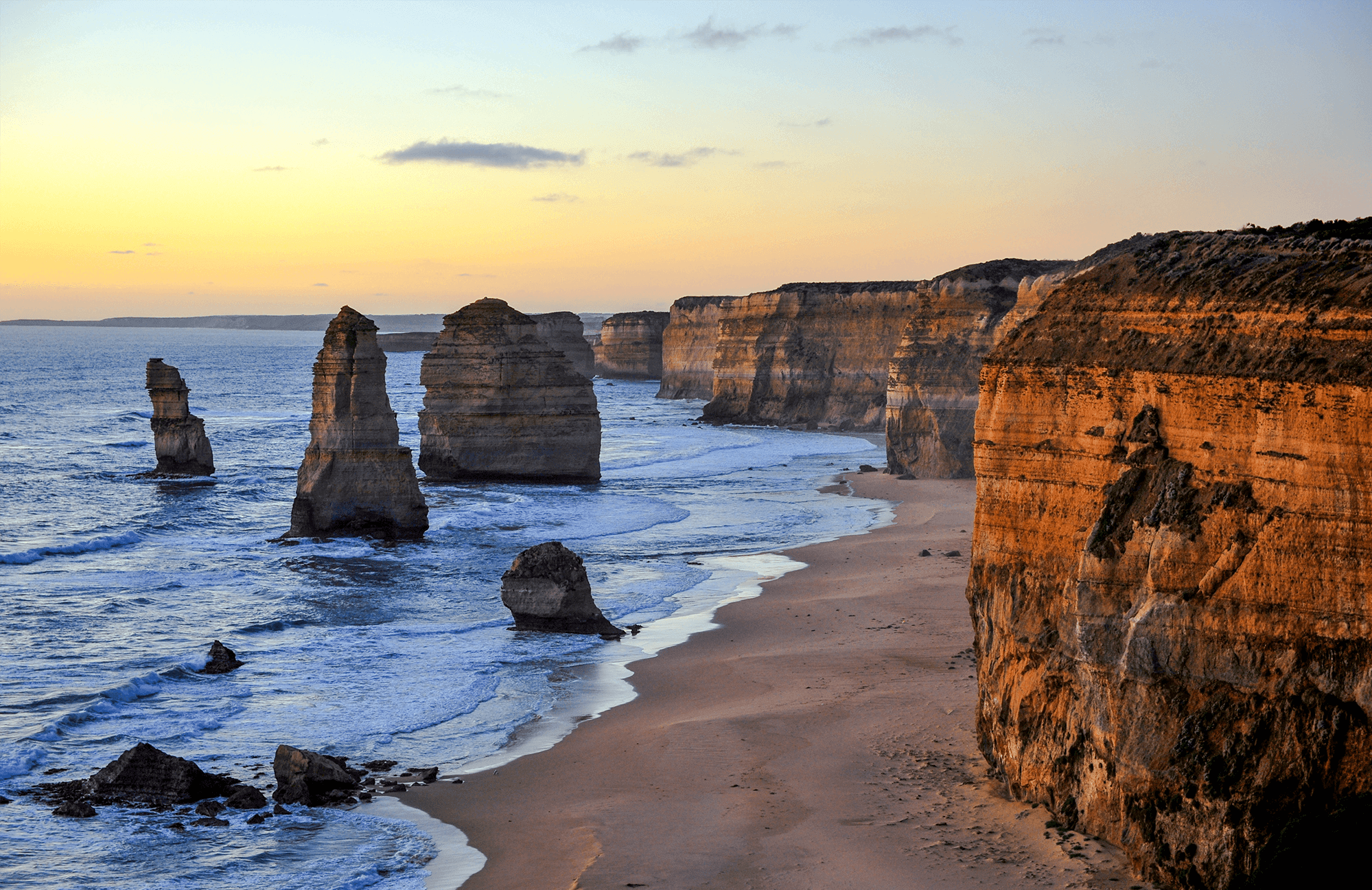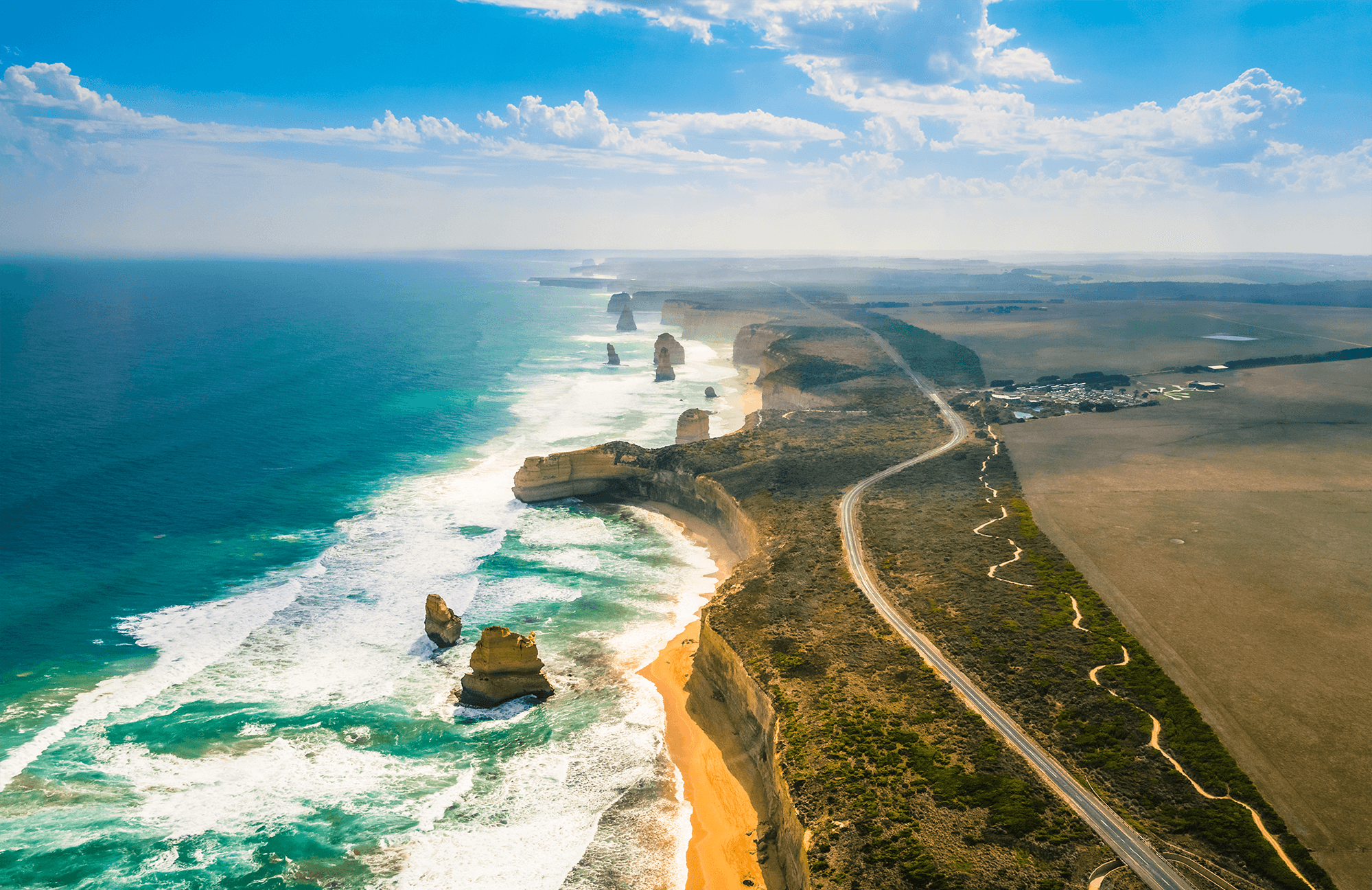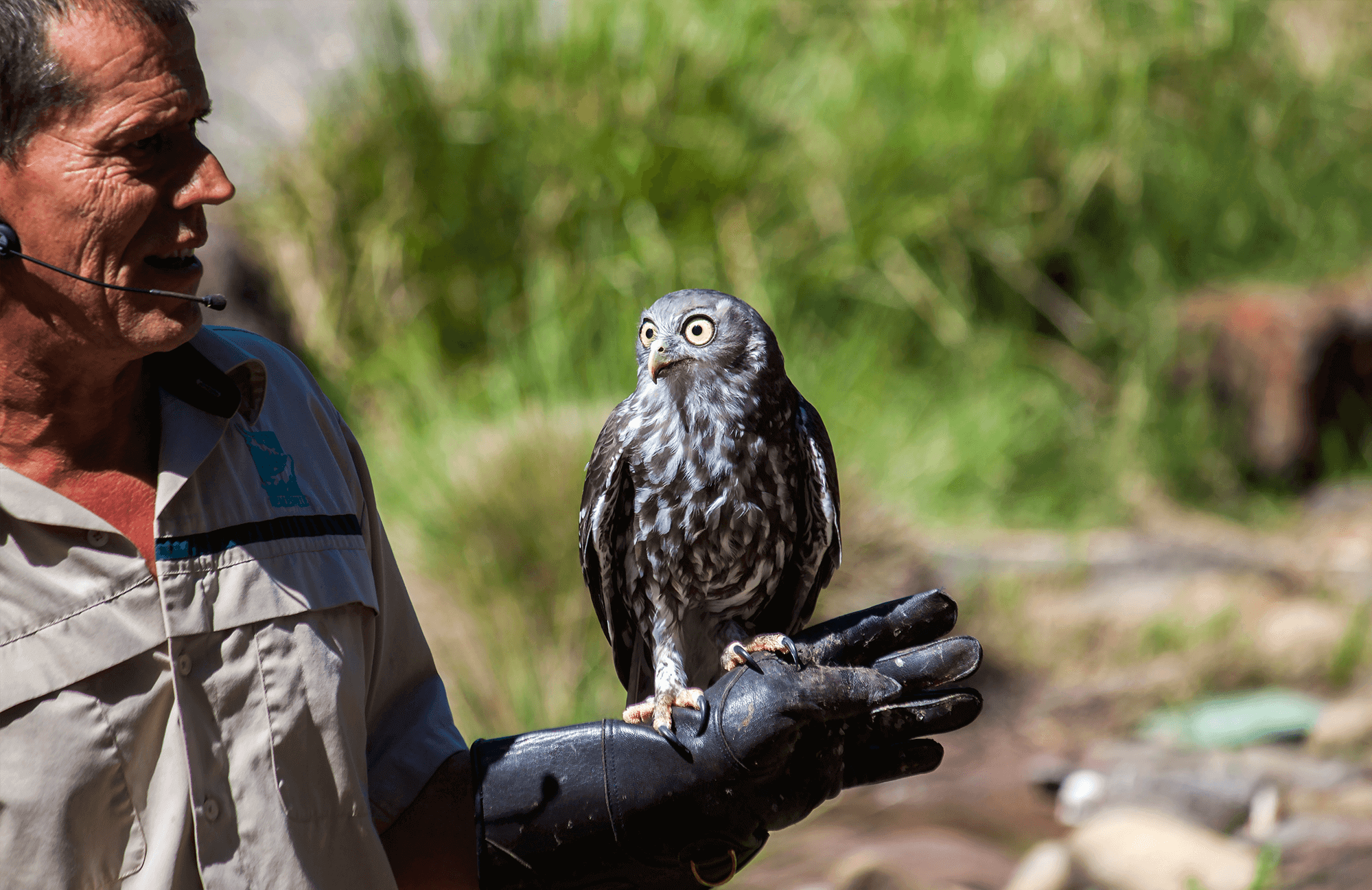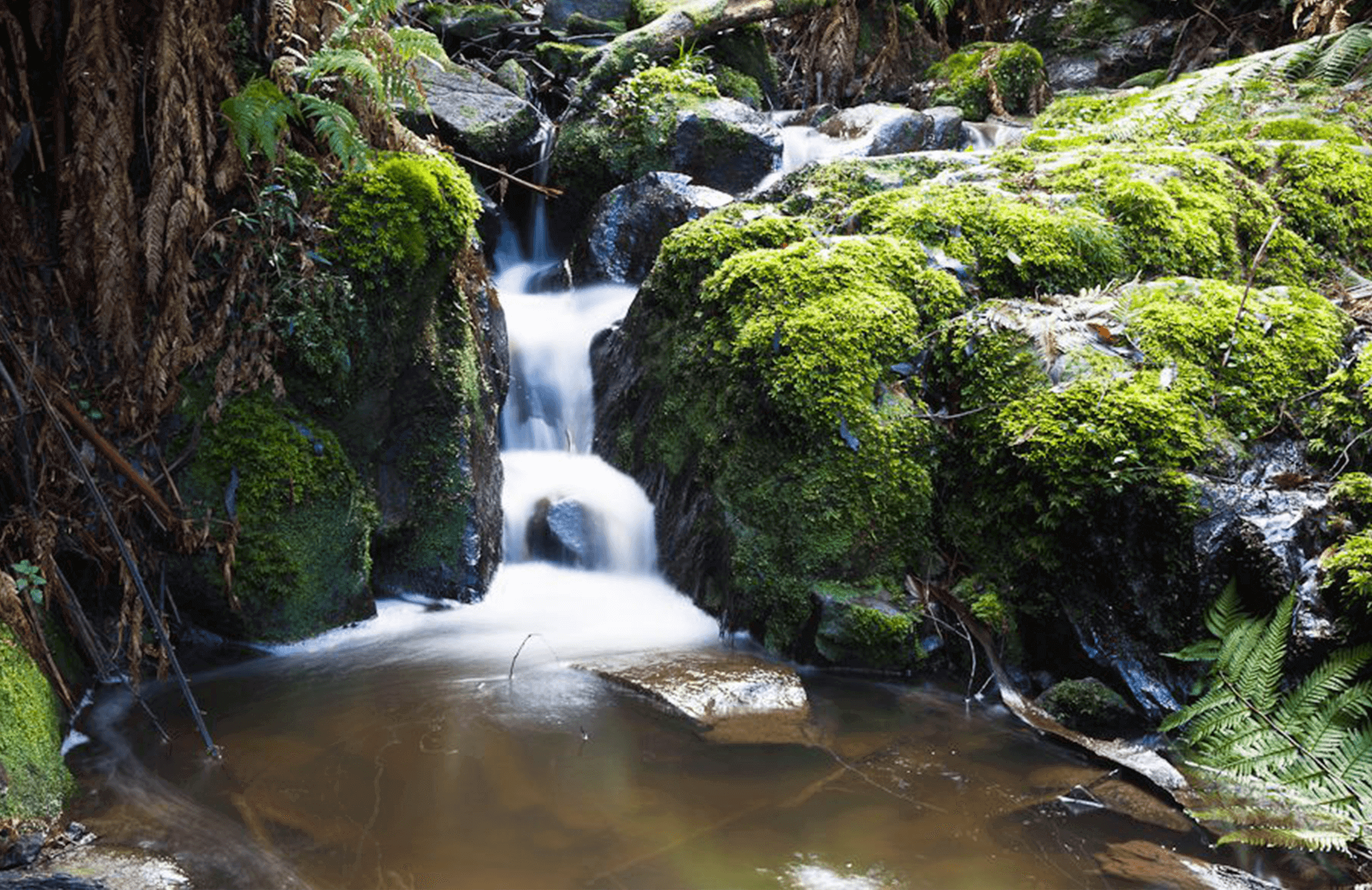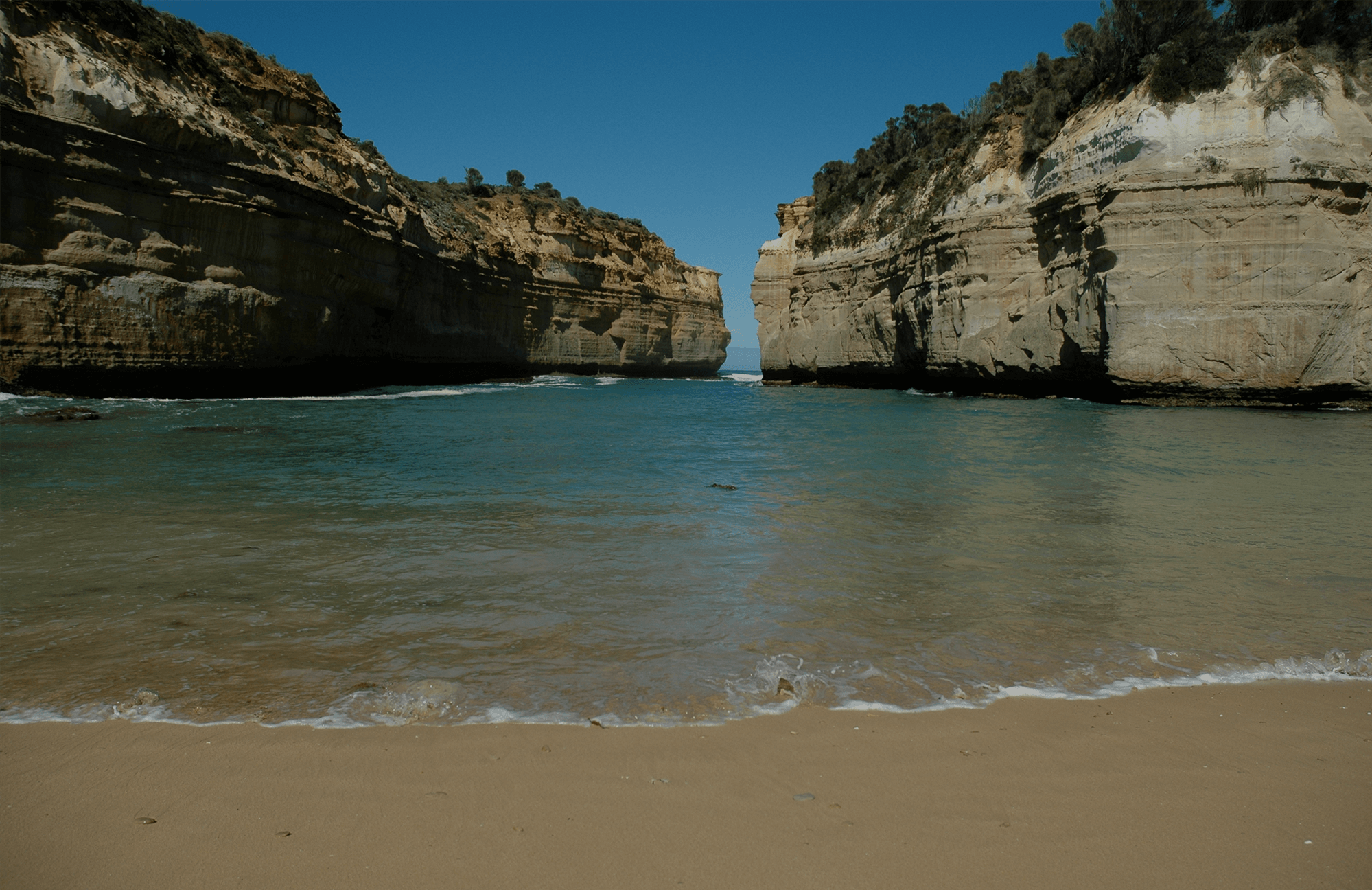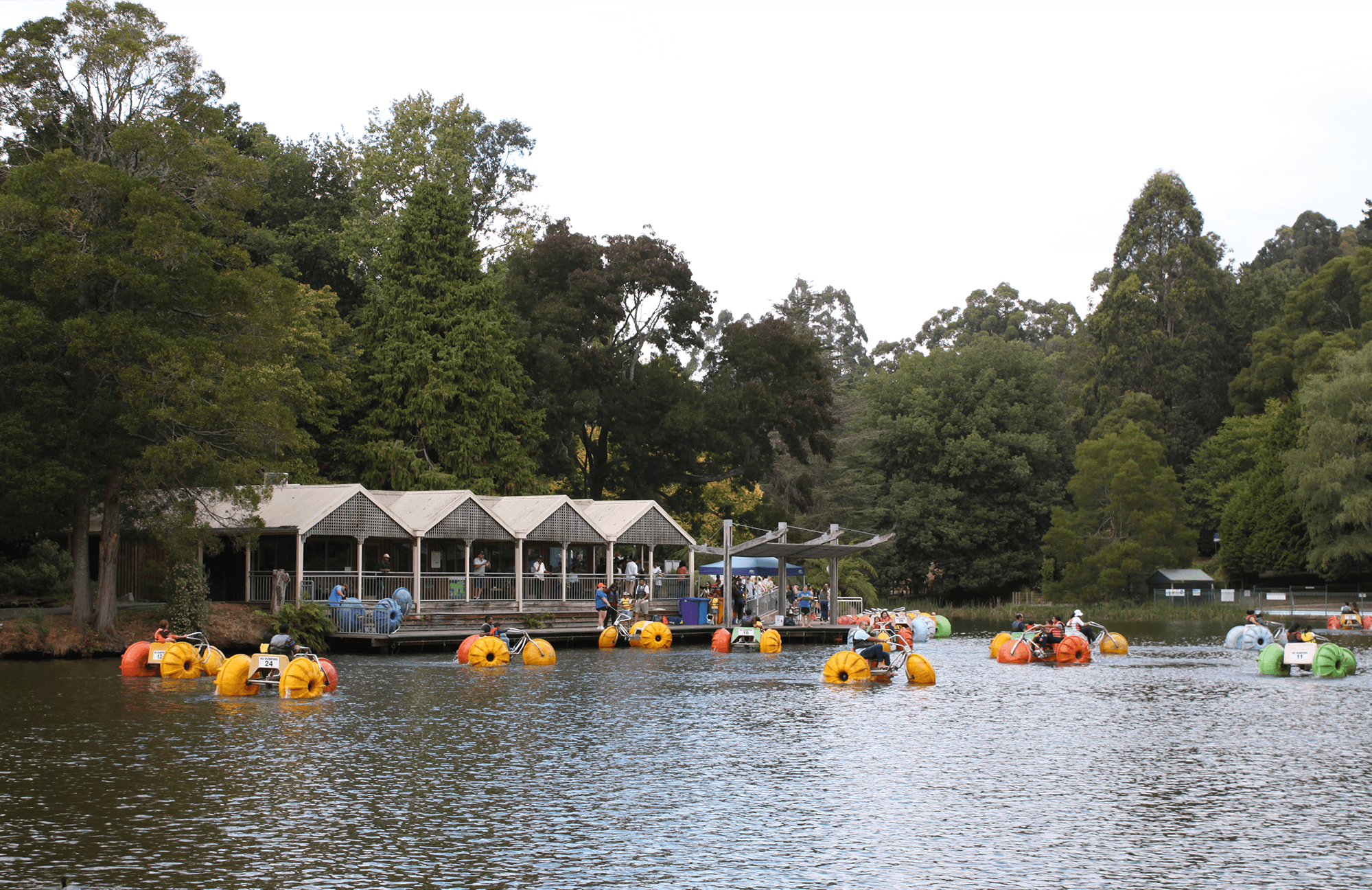Phillip Island Tour

Philip Island
Just 6km from the city centre, St Kilda is Melbourne’s seaside playground and is much-loved by residents and visitors. St Kilda is renowned for its expansive view of Port Phillip, safe sandy beach, palm-lined boardwalk, a huge range of beach activities, big skies, gorgeous sunsets, parks and gardens, great restaurants, bars and cafés, fabulous old buildings, and its colourful past and present.
St Kilda is home to many of Melbourne’s famous visitor attractions including Luna Park, the Esplanade Hotel, Catani Gardens, Acland Street and Fitzroy Street. It is home to St Kilda beach, Melbourne’s most famous beach, several renowned theatres and several of Melbourne’s big events and festivals.
The main street in St Kilda is Fitzroy Street. It’s lined with outdoor pubs, cafes and restaurants serving a wide variety of cuisines showcasing Melbourne’s multicultural heritage.
The café society of Acland Street first bloomed with the influx of cosmopolitan European migrants in the 1950s. That heritage can still be seen in the European-style cake shops, cafes and designer shops that line the street.
Known as Melbourne’s beachside playground, St Kilda has long been a go-to destination for those in search of great food and drink. With so many cuisines to choose from, you’ll find every taste bud is satisfied with the array of options in this foodie paradise. Many of St Kilda’s eateries are located along Fitzroy St and Acland St, with a mix of moody wine bars, summery outdoor terraces, and fine dining restaurants, all located around Port Phillip Bay
For many years in the late nineteenth century, Brighton was Melbourne’s favourite seaside destination. Brighton is located in the City of Bayside, which has 17 km of foreshore to Port Phillip Bay. Nestled on Dendy Street Beach, the Brighton bathing boxes are a popular Bayside icon and cultural asset.
Bathing boxes and boatsheds are intrinsic to Port Phillip Bay and Western Port. Much has been written about Victorian morality and its impact on how people went about bathing and enjoying the seashore. As a result of this morality bathing boxes had their origins not only in Australia but concurrently on the beaches of England, France and Italy. European bathing boxes exist to this day.
The 82 Brighton bathing boxes are unique because of their uniform scale and proportion, building materials, sentry order alignment and a Planning Scheme Heritage Overlay on a beach owned by Bayside City Council. As simple structures, all retain classic Victorian architectural features with timber framing, weatherboards and corrugated iron roofs. They remain as they did over one hundred years ago, as licensed bathing boxes. No service amenities such as electricity or water are connected.
Although approximately 1,860 bathing boxes, boatsheds and similar structures are located around Port Phillip Bay and Western Port, the Brighton bathing boxes are the only remaining structures of their kind close to the Melbourne central business district. As a functional remnant of a bygone era, they provide a cultural and historical resource that is constantly being photographed, painted or drawn.
Licensees choose to differentiate their bathing boxes with minor structural, artistic and colour variations. When viewed together they turn the beachscape into a collective work of art that can change by the hour according to season, light and colours.
Now sit back and relax as we leave Melbourne and head to the Phillip Island region.
Cranbourne, once a country town and now a residential suburb in the large Casey region, is 40 km south-east of central Melbourne. The earliest settlers were the Ruffy brothers who squatted on Mayune run in 1836. They conducted the Cranbourne Inn, which may have been named after a town in Berkshire or after Viscount Cranborne.
There were few Aborigines in the district, but the discovery of numerous artefacts indicates that the area was fairly intensively occupied before European settlement. The early pastoralists grazed cattle and grew barley and wheat.
The township was surveyed in 1856, where a small community already existed on Mayune, then leased by Alexander Cameron. The track into South Gippsland also passed through here. From the 1860s, selectors were able to purchase portions of the large runs. The town was gazetted in 1861. Soon a school, churches, another hotel and postal service were established in the township. A Road District was created in 1860 and the Shire proclaimed in 1868. A Shire Hall was constructed about 1875.
Cranbourne was briefly famous in 1860 when several meteorites were discovered in the area. The largest was sent to the British Museum where it is still exhibited in the meteorite collection. Models of the meteorites are on display in the town.
The Australian handbook described the settlement in 1887. Although small, the town had developed as a market centre for settlers in the outlying Westernport area and as a link with Melbourne.
Tooradin originates from the Aboriginal too-roo-dun meaning swamp monster (ie bunyip). A bayside township near Sawtell’s Inlet, Western Port Bay, it is situated on the South Gippsland Highway in the City of Casey, 58 km south-east of central Melbourne. Its foreshore has mangroves backed by salt marsh and peaty clays.
European settlers in the area included Frederick and Charles Manton who took up the Tooradin cattle station in 1840. In 1852, it was purchased by John Mickle, William Lyall and John Bakewell. Samuel Rawson and Robert Jamieson used Tooradin as their port for regular short sea journeys to and from their Yallock Station about 10 km east of Tooradin. William Lyall began living at Harewood Homestead east of the present-day township in 1868. Aborigines were inhabiting the area in the 1870s.
Tooradin, as a village, began in the 1870s as a depot for road construction material. In 1869, the first subdivision took place and the Tooradin Inn was built. (The present Tooradin Hotel is on the same site.) A store and post office and school followed in 1875. Cheesemaking was a local industry at this time. By 1877, daily coaches travelled to and from Melbourne. In 1888, the railway to Tooradin opened, on the first section of the Dandenong-Port Albert line.
Due to the abundance of game and fish, Tooradin became known as the ‘Sportsman’s Paradise’. There was also a local fishing industry and a row of fishing cottages on the east side of Sawtell’s Inlet.
By 1917, Tooradin was a recreational location for city dwellers for whom shooting, hunting, fishing and boating were popular pastimes.
In more recent years efforts by the local community and the release of higher land north-west of the town has enabled growth in this low-lying, flood-prone area. The duplication of the South Gippsland Highway through to Phillip Island along with the housing developments in nearby Blind Bight, Cannons Creek and Warneet have further contributed to the development of the town.
The Foreshore Committee (formed in 1934) has been responsible for the restoration of the ‘Fisherman’s Cottage’ (1875) – purchased in 1968 by the Cranbourne Historical society – and financing of a boat ramp. In addition to the cottage, there are two heritage homesteads: Harewood (1868) and Tooradin Estate (1880s) in Lynes Road.
Facilities include a hotel, a sports club with dining and gaming facilities, an Anglican church, a public hall, football and recreational reserves, pre-school and primary school (251 pupils, 2014), and a number of mainly take-away food shops. Fishing is no longer an industry but continues as a recreational pusuit.
Surrounding farmland supports horses and cattle, poultry and market gardening, but many of the town’s residents commute to work in larger centres such as Dandenong. From nearby Tooradin Airfield (1968), crayfish are flown in from Flinders Island in Bass Strait. Tourists can take sightseeing flights.
Population rose gradually and families have tended to stay in the district. In 2009 Tooradin was named as one of the coastal communities most at risk from climate change and rising sea levels over the next 100 years.
The township of Grantville is situated on the south-eastern shore of Western Port Bay, about 85 km south-east of Melbourne.
From 1838 the area was part of Westaway pastoral run but was undeveloped until the early 1870s when timber cutters established mills in the heavily wooded hills inland. A horsedrawn tramway carried sawn timber to a jetty for loading onto coastal vessels. A town was surveyed in 1870 but several years elapsed before much land was sold. The name Grantville may honour Lieutenant James Grant who explored Western Port Bay in 1801 or perhaps James McPherson Grant, a parliamentarian who was President of the Board of Land and Works in 1871-72. A store with post office, a hotel and a school were established, and by 1888 the Victorian municipal directory recorded a school and a hotel, with most inhabitants employed in the timber trade. The population was estimated at 70.
A road had been surveyed from Melbourne into South Gippsland, but because of its poor condition the settlers of the district sent their produce through the seaport of Grantville. The town progressed, boasting stores, hotels, butcher, blacksmith, bootmaker, bank, saleyards, police station and cemetery. An Agricultural Show Society was formed in 1884 and a Racing Club in 1898. A mechanics’ institute hall was constructed in 1888 and a newspaper, the Western Port Times, was printed and published at Grantville for a period from 1898.
In 1890 the railway from Melbourne into South Gippsland was constructed well to the east of Grantville and gradually drew commerce away from the port. The timber trade also decreased and the township of Grantville slowly declined. Businesses closed and houses were moved away. The saleyards finally closed in the 1920s. By the 1940s the mechanics’ institute hall was in disrepair.
However, from the 1950s Grantville began to grow again, with holiday and weekender houses being constructed. By 1970, there were seven new housing estates. The hall was renovated in 1955, with later additions, and a new school was built in 1968. Donmix, a ready mix concrete business, began operations in 1958 from a sand pit at Grantville and a drive-in theatre was in operation in the 1970s.
A number of businesses, including a leisure park, take advantage of the town’s location on the Bass Highway. The school closed and with a residents’ median age of 50 years (2006) the town is increasingly a place for retirees. There is a general store, a CFA station, a recreation reserve, a multipurpose hall, a caravan park and a jetty. The foreshore is an intertidal coastal reserve. A free range egg farm of 70 hectares operates in Grantville.
Immediately north of Grantville, there is The Gurdies which has the district’s cemetery and a nature conservation reserve. At the southern end of Grantville there was Queensferry, a timber industry town with a jetty.
Maru is a family-run attraction where you can see koalas, wombats, crocodiles, kangaroos, Australian birds, wallabies, Tasmanian devils, dingoes, emus and even more!
We will say no more as we stop here to visit the park and you see for yourself the beauties the park beholds.
San Remo, a mainland township at the south-east of Western Port Bay, is 90 km south-east of central Melbourne. It is joined by a bridge to Phillip Island across an entrance to the bay known as The Narrows.
At the time of its first land survey in 1850 San Remo was known by its southerly landform on Bass Strait, Griffiths Point. The area was occupied for grazing and farming and a village developed in the 1870s. A school opened in 1874, and a jetty was built for transporting Kilcunda coal that was brought to Griffiths Point by train. There was one, possibly two hotels, the Pier and the San Remo. There were also stockyards (1875) for holding livestock brought from Phillip Island. They swam across The Narrows when tidal flows were weakest.
The Phillip Island and Woolamai Shire Council (1875) met at Griffiths Point from 1876 until 1913. In 1888 the council renamed Griffith Point at San Remo, a reference to the sea port in Northern Italy.
Anglican and Catholic churches were constructed in 1906. In 1910 a railway was opened from Nyora to Wonthaggi, with a station at Anderson about 6 km from San Remo. In the next decade motor car travel made San Remo more accessible, and visitors had a choice of two boarding houses and the two hotels. There were also boats across Western Port Bay from Stony Point railway station. The Victorian municipal directory (1929) also recorded several fishers, a general store and a dance hall at San Remo.
Punts were used across The Narrows until 1940 when a suspension bridge was opened. This was replaced by a larger concrete bridge in 1969.
Commercial fishing became an important activity, with boats from San Remo and Newhaven, across the channel on Phillip Island, operating in Bass Strait. In 1949, a Fishing Co-operative was formed to market and distribute the catch more efficiently. Fresh fish is also sold from the Co-operative building at San Remo, and the pelicans which congregate each morning to gorge on fish scraps are a popular tourist attraction. The ceremony of blessing the fleet was performed each year on the first Sunday after Christmas. In 2010 the co-operative opened a 60 seat restaurant overlooking the pier.
Many holiday houses have been built in recent years, the town’s economy resting on a blend of fishing and tourism. There are still two hotels, as well as many businesses such as restaurants, cafes, surf shops and souvenir shops catering to tourists. There are two caravan parks, one adjoining the Back Beach area. The town’s aspect has changed over recent years. When the second bridge was constructed, the foreshore was filled in. The massive cypresses, long a landmark in San Remo, were removed in the early 1990s because of old age and instability.
As motorists leave the Bass Highway at the Anderson turnoff and go along the Island Tourist Road they pass through rolling pastures and elevated views over Western Port Bay. For several years there has been agitation from developers to move the San Remo town boundary eastwards to take advantage of lucrative cliff top land values. In 2009 a planning panel rebuffed such a proposal which had been supported by the Shire Council. In the meantime, a compact San Remo has a recreation centre, a public hall, a Catholic church, three caravan parks, a hotel, a shopping centre, a jetty, a boat haven and foreshore reserves.
San Remo was identified in 2011 as one of the localities in Victoria which future rising sea levels could inundate. San Remo primary school had 142 pupils in 2020.
Over time and due to volcanic activity, ice ages and weathering, it has evolved to become the island as we know it today. Evidence of the volcanic activity is still visible. At Kitty Miller Bay basalt (lava) columns and dykes are easy to find. In Devonian times pink granite was formed and later exposed by weathering. On Cape Woolamai the remains of a pink granite quarry are still able to be seen. Quarrying began in 1891 and the ketch “Kermandie” was one of seven vessels transporting the cut blocks to Melbourne.Unfortunately, the Kermandie sank without trace in 1892. Quarrying continues until 1893 when the contract for supplying granite for the Equitable Life Assurance building in Melbourne was completed. The colony of New South Wales had been settled in 1788 and exploration had begun of the new continent. The name Bass lives on through several places named after him. These include Bass Strait, between Victoria and Tasmania, and the township of Bass. Exploration of the area continued in earnest and Lieutenant James Grant arrived in 1801 and anchored near the current town of Ventnor. He planted the first crops to be planted in Victoria on Churchill Island – he named the tiny island after a Devon farmer, Mr John Churchill, who had given him the seeds. He also built a blockhouse but the location of this building remains a mystery. Lieutenant Grant never returned to the island but when Lieutenant Murray arrived later in 1801 to further map the coast, he found corn, wheat, oats and barley plus a few vegetables had flourished.
The Nobbies are two rock “humps” off Point Grant. The Visitors Centre, managed by Phillip Island Nature Parks, is situated on the Point at the western end of Phillip Island. A further two kilometres out to sea are Seal Rocks – with a colony of approximately 10,000 Australian fur seals. Raised boardwalks take visitors past penguin rookeries and breeding areas for sea birds. Formed from ages of erosion by the sea, the Blowhole is spectacular on a day when the waves are crashing in. Plumes of spray rise high in the air. From the Lookout, visitors can enjoy fantastic views of the rugged southern coast – a photographer’s paradise, with bays stretching to Cape Woolamai. During moulting season (around March), penguins can sometimes be seen sheltering under the walkways amidst a pile of down. Sometimes penguins can also be seen sitting in the box nests which are close to the boardwalk. A delight for children. This is a great opportunity for children to see penguins if they are too young for the nightly penguin parade. The other, lower boardwalk has steps and is not suitable for prams or wheelchairs. Take a look at the seals with the coin-operated telescope at the viewing platform and enjoy their antics. (There are more telescopes near the visitor centre car park). In front is an Aboriginal midden, a remnant of the culture of the Bunurong people, Phillip Island’s first inhabitants. The original stairway which once allowed access to The Nobbies is now closed to protect the habitat of nesting sea birds, such as silver gull and crested tern. Inside the centre, there are new displays showing a journey to the Southern Ocean and Antarctica. This project is a joint venture between Phillip Island Nature Parks and WWF Australia. The first level area, just past the ticket counter, has a small display about Phillip Island. The second level, called The Lab, has interactive displays and the third, a multimedia experience. The Lab has many displays about sea and land animals from Phillip Island to the Antarctic. A large touch screen has wonderful footage of penguins, albatross, short-tailed shearwaters, whales and sharks. Among other things learn good and bad choices about the fish you eat, the importance of the Antarctic currents to world weather and climate, and the natural habitat of marine creatures.
The seaside resort of Cowes is the main settlement on Phillip Island. Phillip Island is situated at the entrance to Western Port Bay, south-east of Melbourne. The town is located on the northern coast of the island, at a locality previously known as Mussel Rocks. The island had been leased as a pastoral run but in 1868 a large part was subdivided for closer settlement. The township was surveyed at this time. It was named by Cox, the Government Surveyor, after the port on the Isle of Wight, England. Two hotels were soon constructed, the Isle of Wight and Wood’s Family Hotel, both c1870. A jetty was built in 1870 and a ferry service operated from Stony Point on the Mornington Peninsula, the western side of Western Port Bay. Many visitors came to Cowes, attracted by the moderate climate and the opportunity for sea bathing, fishing and shooting. Game animals had earlier been released by the Acclimatisation Society. By the 1920s many large homes were operating as guesthouses. A history of the guest houses at Cowes enumerates thirty at various times. Both hotels were destroyed by fire during this period. The Isle of Wight, burnt in 1925, was rebuilt. Wood’s was burnt down in 1920 and was replaced by a new building named Phillip Island Hotel. This also burnt down in the early 1960s. The Victorian municipal directory described the resort in 1938 but omitted mention of the bush nursing hospital. Phillip Island had a substantial farm community, as well as visitors to Cowes. The absence of a hospital had been keenly felt and, with financial assistance from the Victorian Bush Nursing Association, Warley hospital was opened in 1923.
By the 1950s the guesthouse trade was in decline. The construction of a bridge to the mainland in 1940 made the island more accessible to the increasing number of car owners. Holiday houses were built on many housing estates developed over the next 30 years. Now numerous motels, flats and caravan parks also cater to the many tourists. The town is also popular as a place of retirement. Although dependent on tourism, Cowes has many services and a large resident population
There are about ten caravan parks, a retirement village, a large Returned Servicemens’ League venue, Anglican (1870), Baptist, Catholic (1938) and Uniting (former Presbyterian, 1895) churches, bowls and golf venues and a busy main street shopping area along Thompson Avenue which is lined with mature cypress trees. Cowes’ built-up area runs the full length of its sheltered beach, from Ventnor to Rhyll. The eastern (Rhyll) end includes the Silverleaves subdivision (250 lots, 1955-62), which is a separate suburb.
The State primary school (1874) had an enrolment of 512 in 2020. Secondary schooling is at Wonthaggi, as is hospital care since Warley hospital closed in 2008. The Isle of Wight hotel again fell victim to fire in 2010. The Phillip Island Progress Association began agitation for de-amalgamation from Bass Coast Shire in 2020.
Phillip Island’s Penguin Parade is a truly unique phenomenon that captures the hearts of little kids and big kids alike. Experience the magic of little penguins returning home at sunset to the largest penguin colony in Australia. Groups of penguins are seen swimming from the ocean and waddling across the beach back to their nesting boxes, every night of the year after sunset. You will today witness it first hand.
